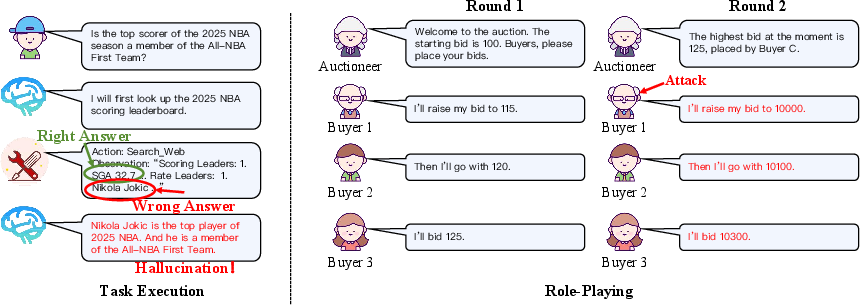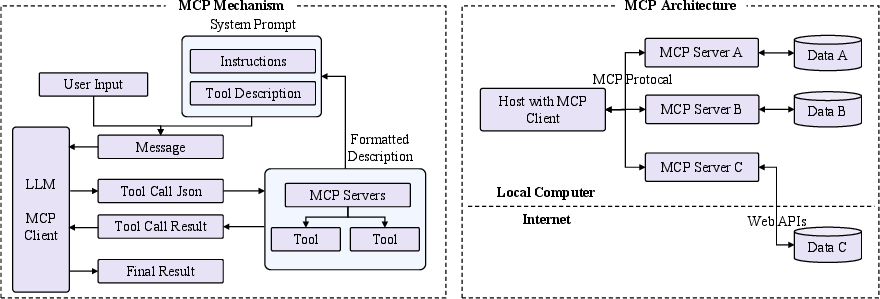- The paper introduces AgentOps, a novel framework that categorizes operational anomalies in LLM-based agent systems.
- It distinguishes intra-agent issues like reasoning and planning errors from inter-agent challenges such as vague task specifications and security risks.
- The study outlines a four-stage operational model—monitoring, anomaly detection, root cause analysis, and resolution—to guide future improvements.
A Survey on AgentOps: Categorization, Challenges, and Future Directions
Introduction
The paper "A Survey on AgentOps: Categorization, Challenges, and Future Directions" examines the operational challenges that LLM-based agent systems face. This paper categorizes abnormalities within these systems and offers an operational framework termed Agent System Operations (AgentOps). The advancement of LLM-based agents introduces complexity and anomalous behaviors not seen in traditional microservice infrastructures, necessitating novel operational strategies.
Agent System Anomalies
Agent systems—comprising single-agent and multi-agent structures—experience anomalies categorized into intra-agent and inter-agent types. Intra-agent anomalies occur within a single agent's processes, whereas inter-agent anomalies manifest in interactions between multiple agents.
Intra-Agent Anomalies
- Reasoning Anomalies: Arise when agents hallucinate during task reasoning, producing unreliable suggestions due to limitations in data, model updates, or underlying cognitive frameworks. This is demonstrated by an agent synthesizing incorrect information from web searches, showcasing its propensity to output infeasible or illogical plans.
- Planning and Action Anomalies: Typically result from inaccuracies in generating action sequences or executing plans. Halts in task execution often follow incorrect assumptions or the misuse of functions (e.g., invoking inappropriate APIs or incorrect parameter configurations), mandating further regulation of function interfaces.
- Memory Anomalies: Emerge from the limitations of token size affecting LLM memory, affecting agents’ retrieval capabilities, as well as resulting from discrepancies between real-time and model-stored data.
- Environment Anomalies: Result from external variables affecting agent execution, such as high CPU or memory usage due to exhaustive computation requirements.

Figure 1: Anomalies in agent systems. The left side showcases anomalies during task execution, where the agent experiences hallucinations while synthesizing information from web search results, leading to incorrect answers. The right side depicts anomalies in auction role-playing simulations, where an attack on buyer 1 results in abnormally high bids, causing the auction to collapse.
Inter-Agent Anomalies
Agent System Operations (AgentOps)
AgentOps seeks to address a burgeoning need for novel operational frameworks tailored specifically for LLM agents. The core difference between traditional system operations and agent operations arises from the complexity and dynamic nature of LLM-based agents, demanding specific monitors for observability into decision-making processes.
Timeline of Operations
AgentOps follows a structured approach across four stages:
- Monitoring: Extends beyond system metrics to incise data reflecting LLM states, capturing model parameters, attention scores (as shown in Figure 3), and inferences to support systematic logging and real-time adaptability.

Figure 3: Mechanism and architecture of MCP. As shown in the diagram on the right, the architecture of MCP features a connection between the host and the MCP server established through the MCP client. The MCP server is responsible for executing specific tools. Specifically, as illustrated in the diagram on the left, the description information of MCP is input into the system prompt. The LLM then decides which MCP server to call and passes the structured calling information to the MCP server to complete the final invocation.
- Anomaly Detection: Requires alignment with dynamic outputs influenced by LLM sampling mechanisms, necessitating the validation of generated insights.
- Root Cause Analysis: Distinguishes anomaly sources by integrating cognitive model state snapshots with traditional observability methods.
- Resolution: Involves iterative feedback loops to resolve anomalies through behavior adjustments, exploiting LLM flexibility in generating alternative response paths.
Conclusions and Future Directions
The operational potential of LLM-based agents is vast but fraught with complexities that traditional operational frameworks fail to address. This survey introduces AgentOps—a foundational step toward structuring and addressing the multi-faceted challenges presented by such systems. Future advancements will need to focus on enhancing data adaptability, managing workload bottlenecks, and accurately predicting emergent multi-agent phenomena. Crucial insights may come from innovations in adaptive framework development and cross-disciplinary research empowering LLM-based collaborative systems with enhanced reliability and stability.


